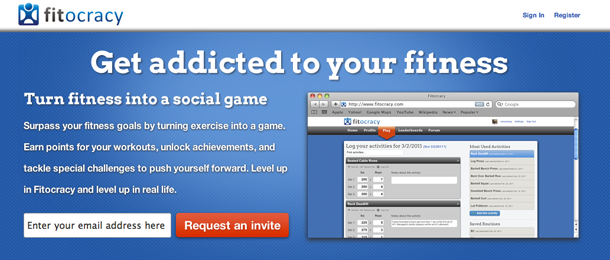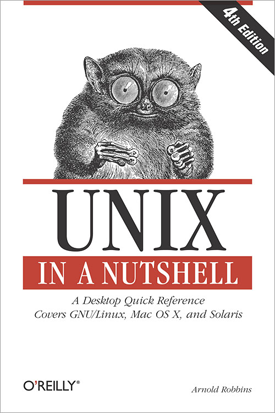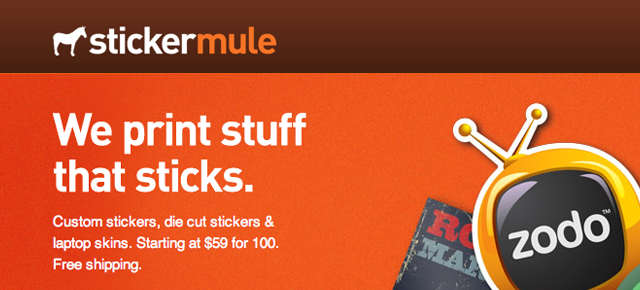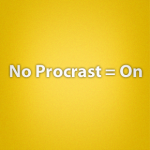
In December of 2005, Michael Arrington of TechCrunch put a list together of his favorite web 2.0 companies he couldn’t live without. That was almost 5 years ago, and we decided it would be fun to see how the startups are fairing in in 2011.

BlogLines
I’ve actually never heard of bloglines until I read this post, but apparently it was planned to shut down on October 1st, 2010, but then Merchant Circle acquired it and re-launched it, so the website is still up.
Bloglines was essentially a RSS reader and a news aggregator ,and I can see why Arrington couldn’t live without it back in ’05. For a news junkie, it had everything you needed. According to the Mashable article, the founders said that Twitter & Facebook basically killed the service. Maybe their is some minor validation in “RSS is dead” after all? I still rely on RSS for my iPhone news consumption, but I agree twitter & facebook is where I get my latest news.
Here are some of the awards they received, according to their Wikipedia page
- Included in Time Magazine’s Top 50 Web Sites for 2004[6]
- Voted Best Blog/Feed Search Engine by the Search Engine Watch Awards in 2005[7]
- BusinessWeek’s Best of the New Web[8

Del.icio.us
We all know the story of Delicious and Yahoo, so there’s not much explaining that needs to be done regarding this. In 2005 it was strong, and I think it is still going strong until Yahoo officially decides to end it. There are a lot of competitors out there in the bookmarking business, but I still don’t see the need for it to be honest. I ended up with thousands of bookmarks, and I never found myself looking back for saved bookmarks. If I needed something, I just google it and blam there it is.
However, maybe i’m not the perfect user of this tool. Someone inevitably asked what the alternatives to delicious were on Quora. One that came up that was slightly different then the rest was PearlTrees. I’ve tried it, and I’ve tried to like it and I just can’t. It just seems like so much work just to organize bookmarks or websites, or whatever in the world it is trying to organize.
But, delicious was very relevant in 2005 and I think still very relevant in 2011.

FeedBurner – Acquired by Google in 2007 for $100MM, I can confidently say that feedburner is still very relevant in 2011. RSS is not dead, and I’m fairly sure every one that uses RSS for their blog has it connected through feedburner. It provides detailed analytics on your RSS subscribers, and i’m not sure who the competitors are in this space. So I take back what I said. Maybe RSS isn’t dead!!??

Flickr – Another Yahoo acquisition that is still loved by everyone, but can probably have been more successful if they grew the site properly. I personally think it could have pivoted into some sort of Facebook, but Yahoo just didn’t see it that way apparently. Regardless, it is still safe to say that flickr is still very very relevant and loved by many users. I don’t use it much, but I know that a lot of my friends and colleagues do. Facebook has very much so jumped into the photo space, but Flickr still remains to be loved and probably still a web 2.0 app that people can’t live without.
MeasureMap – I had to Google this one and after a few searches I figured out that Google bought them and the site now redirects to Google Analytics. It was supposed to be analytics for your blog. This one is hard to say if it is “still relevant” or not, because not many people got to see what it was like. Google analytics is obviously very relevant.
Memeorandum – This one I also had to Google and soon figured out that it was the early days of TechMeme. It seems to be that the tech section of memeorandum had evolved into a full site of its own and needed its own memorable URL. Hence we have techmeme.com. This is also a site I don’t use, but I’ve seen a lot of articles regarding techmeme.com and is still very widely used by the tech community.

NetVibes – I used to love netvibes, and since twitter / facebook I’ve fallen out of love with it. It has an awesome interface and I think it was / is is a leader on how to design a clean interface for a personalized home page. It is still very relevant now and there has been a lot of coverage of netvibes on techcrunch
OmniDrive – From their wikipedia page: “Omnidrive was an online storage company with a single multi-platform product that aggregates storage into a single place.” Sound Familiar? Well, it is now defunct and even if they were still around, Dropbox would be some stiff competition. This actually brings a smile to my face, and should give everyone hope that you can still do something that another company failed at. This also means that you should give Dropbox a LOT of credit for not only surviving, but being an essential service for almost anyone who uses a computer.

Pandora – I actually prefer grooveshark as my place for music, but it is still way behind Pandora in terms of usage. It has some stiff competition with last.fm and grooveshark, but it was a must have in 2005 and it is definitely a must have in 2011.

Skype – In 2005 it was a must have, and 2011 it is definitely not going anywhere even if Google is part of the competition. It’s a well known and very used international product, and still is a mission critical app for a lot of people around the world. I’m sure Arrington wouldn’t disagree with that.

Technorati – I’m kind of torn on this one. It’s definitely not a “must have”, and I’m almost thinking it falls under the not relevant category. It’s original intention was for real time blog search, but I’m not sure that’s what technorati is used for. It has a lot of content from various blogs and has a lot of its own original content. It’s borderline a content farm. Google has its own blog search engine and again Twitter & Facebook have taken over where people get their content from. Do I think arrington still uses technorati? My guess is no.

WordPress – The platform that currently powers thestartupfoundry.com. Is it a must have? Abso-freaking-lutely. I honestly don’t know what I would do without wordpress. It’s easy to use, it’s customizable and it’s robust for power users. It’s up there with Dropbox. I wasn’t using it in 2005, but I can imagine it has approved greatly in 5 years. Arrington: Spot on.

Yahoo Maps – This one actually confuses me as why Arrington chose this one over Google Maps. I originally thought that the only reason he chose this one was because Google Maps wasn’t “invented” yet. But, alas I was wrong. Google Maps was launched in February of 2005, thus giving Arrington almost 10 months to use it. I distinctly remember when Google maps was originally launched, it killed the competition in terms of user interface with their slick Ajax usage. In terms of relevance, this one is definitely not relevant. It’s used by people who don’t know any better and just get directed their because their homepage is .
Follow the author on twitter @robbieab. For up to the minute startup news – follow us on twitter @startupfoundry



















 g takeaway is that outreach efforts work best when you have a genuine desire to connect with people. We really want to be thought well of by these communities and I think that’s been obvious to all the people that have helped us along.
g takeaway is that outreach efforts work best when you have a genuine desire to connect with people. We really want to be thought well of by these communities and I think that’s been obvious to all the people that have helped us along.







